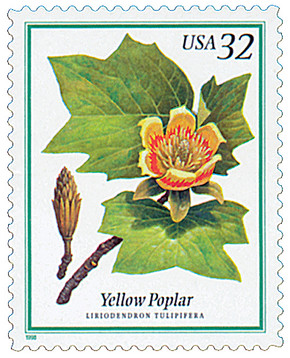
U.S. #3194
1998 32¢ Blue Paloverde
Flowering Trees
1998 32¢ Blue Paloverde
Flowering Trees
Issue Date: March 19, 1998
City: New York, NY
Quantity: 50,000,000
Printed By: Banknote Corporation of America
Printing Method: Lithographed
Perforations: Die Cut 11.3
Color: Multicolored
City: New York, NY
Quantity: 50,000,000
Printed By: Banknote Corporation of America
Printing Method: Lithographed
Perforations: Die Cut 11.3
Color: Multicolored
... more
U.S. #3194
1998 32¢ Blue Paloverde
Flowering Trees
1998 32¢ Blue Paloverde
Flowering Trees
Issue Date: March 19, 1998
City: New York, NY
Quantity: 50,000,000
Printed By: Banknote Corporation of America
Printing Method: Lithographed
Perforations: Die Cut 11.3
Color: Multicolored
City: New York, NY
Quantity: 50,000,000
Printed By: Banknote Corporation of America
Printing Method: Lithographed
Perforations: Die Cut 11.3
Color: Multicolored
Named for the blue-green color of its trunk, the blue paloverde (Cercidium floridum) grows in the dry regions of the southwestern United States, from central Arizona to southern California, and in the northwestern part of Mexico. This tree can be found along dry streambeds and valleys, on lower slopes of desert grasslands, and along the sides of desert canyons. In these places, the paloverde is useful in slowing erosion because the roots help hold dry, loose soil together.
The paloverde tree is a member of the pea family. It produces pods that are about three inches long and contain two or three seeds. These seed are a familiar food source for the Pima and Papago Indians of Arizona. The young pods can be eaten like beans, or the seeds can be dried and ground into meal. Mountain sheep, deer, and smaller mammals also eat the seeds from this tree, along with the twigs and leaves.
The blue paloverde grows from 15 to 30 feet tall. It is a bushy tree that usually has a short, wide trunk and intricate, thorny branches. Its small green leaves begin to open in March and drop by late summer, after the rainy season. The tree bears clusters of bright yellow flowers in May, followed by the long, narrow pods, which are yellowish-brown in color.













